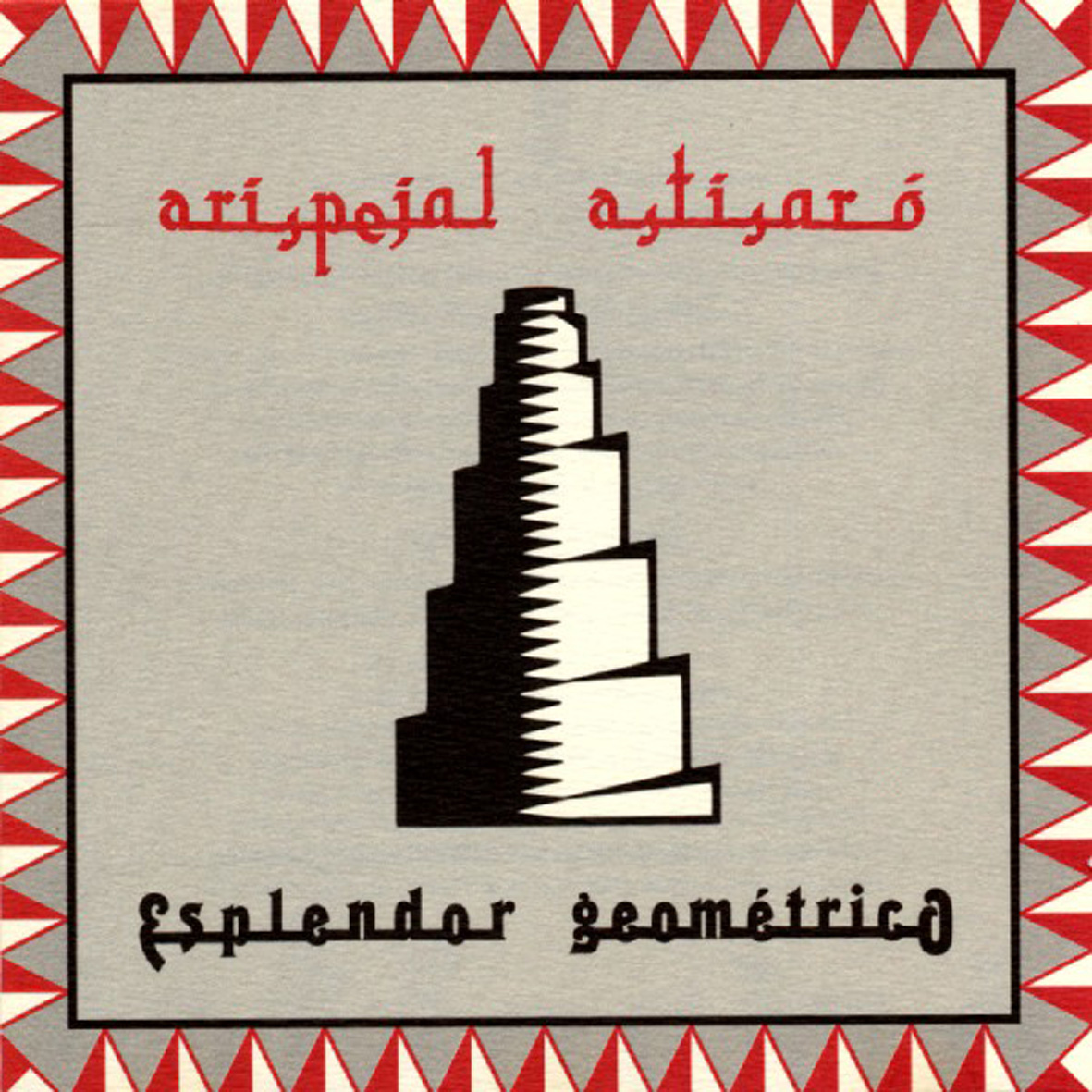Esplendor Geométrico, "Arispejal Astisar√≥"

Recently remastered and reissued on their own Geometrik label with radically different cover art and some bonus tracks, this classic 1992 album captures EG in their noisy, rhythmic industrial prime. Like 1991's Sheikh Aljama before it, Arispejal Astisaró flirts with a superficial Middle Eastern influence, but the real draw is its dense and relentlessly punishing machine rhythms. As with many EG efforts, it is sort of a primitive, hit-or-miss affair that largely lives or dies on the strength of its beats, but its highpoints are among the most visceral, bracing, and distinctive works of industrial dance music's brief golden age (and its occasional divergences are even better).
If his albums are any indication, Arturo Lanz does not strike me as a man who is terribly troubled by things like indecision, ambiguity, or nuance.In fact, he often seems more like a machine than a man: a machine that has only an on/off switch (and, at this somewhat early stage of his career, a machine whose settings are all permanently cranked to "10").While that might sound like mere hyperbole, he truly does sound almost inhumanly obsessive and monomaniacal on Arispejal Astisaró.His approach to this album can best be summarized thusly: 1.) devise a compelling rhythm, 2.) execute it with as much brute force as possible, 3.) loop it, and 4.) repeat again and again until there are enough songs for an album.Fortunately, Lanz can be something of a genius within those extremely narrow aesthetic confines, finding many unexpected variations and delivering them all with an appropriate degree of pummeling ferocity.
As stated earlier, the best pieces are almost invariably the ones with the strongest or most inventive rhythms, as Lanz was certainly not concerned with trivialities like hooks, structure, or dynamic variation at this stage in his career.Those rhythms, however, can take some unexpected forms on Arispejal, most notably with the strong opener "Jari," which sounds like an overloaded contact mic recording of a lawn sprinkler taken during an earthquake.Or a recording from inside a downed helicopter during a Blackhawk Down-style urban firefight.I think I will go with the latter.In any case, the most prominent sound is by far the unrelenting sound of the chopper blades (or whatever), but a number of random and mysterious crashes and snatches of garbled voices peak through the stuttering roar to give a menacing and cryptic sense of place.Though Lanz and his collaborator Gabriel Riaza return to similar noisy abstraction again with locked-groove machine noise insanity of the title piece, the rest of the album veers towards significantly more danceable territory.
That certainly does not mean that it would be easy to dance to though.For example, one of the most propulsive pieces ,"Malos Tratos," is frequently disrupted by blood-curdling shrieks, whereas yet another piece ("Felación") awkwardly/comically features some cut-up sex moans.Others are simply just too machine-like, such as the punishing and ferocious clatter of "Bi Bajin," which is also notable for having the most prominent Middle Eastern influence on the album (which is just a chopped and garbled snatch of dialogue).Another dancefloor-killing trait that several sounds possess is a bizarre randomness: while the underlying beat always remains an unstoppable, unchanging force, some of the peripheral noise and percussion stabs seem purely arbitrary and out of time.I am not sure why that could be, as it otherwise seems like EG is a deeply perfectionist project.Perhaps that perfectionism only extends to beat itself, while the roiling entropy above is left somewhat to chance.
Some of the other pieces are more inventive than over-the-top, however, and their presence is what makes Arispejal such a fascinating effort.In particular, I liked "Rab√∫a Aromia," which sounds like a muffled contact mic recording of a telegraph wire during a wind storm.Another stand-out is "Es Inaudito," which combines an oddly timed clanking metallic rhythm with a surprisingly fluid bass line and snatches of breathy female speech.Notably, neither piece is embellished with EG's characteristic maelstrom of blown-out chaos, which makes them surprisingly listenable (and indicative of the direction to come in the future).Then, on the other side of the spectrum, there is the tense and manic bludgeoning of "Ampuchao," which nicely evokes the feeling of frantically running away from a pack of drill-wielding maniacs.
Arispejal is rounded out by a couple of very likable pieces that sound like somewhat muted variations on the standard EG formula."Cataré," for example, takes a slowed-down Latin rhythm and leaves it fairly unmolested except for a distant electronic hum and some occasional thuds and squelches.The closing "Nu Decotora," on the other hand, just unleashes a seemingly basic (but unrelenting) rhythm beneath some moaning, sludgy noise and periodic eruptions from what sounds like downed, sparking power lines.More than any other piece on the album, "Decotora" achieves a hypnotic pulse that remains compelling for its entire duration.As a result, it is deceptively the album's finest piece, as Arispejal's greatest fault tends to be allowing promising ideas to unfold for too long with too little variation: Lanz always does a fine jab grabbing my attention, but does not always manage to hold it.While the obvious, immediate appeal of this record primarily lies in its punishing machine crunch and feral oil-drum rhythms, the pieces that offer the most lasting rewards are mostly the ones where Lanz and Riaza allow their omnipresent veil of crushing density to lift a bit.Consequently, I tend to prefer EG's somewhat more nuanced later work to their work from this "blunt force" period, though I still feel that this is a strong, memorable, and landmark album within EG's discography.
(Note: the 2014 reissue appends four songs from the 1987 Bruitiste compilation on RRRecords, which date from roughly the same time as these recordings: despite being released in 1992, Arispejal was recorded between 1987 and 1989.)
Samples:



